Zinc Selenide (ZnSe) Aspheres
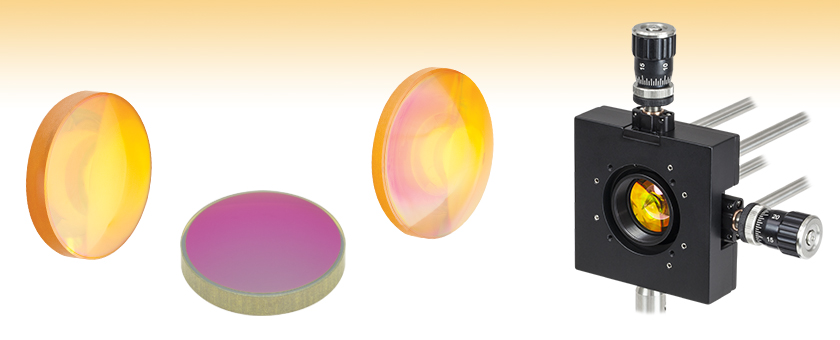
- Ø1" Laser-Grade ZnSe Aspheres
- Two AR Coatings Available: 2 - 5 µm or 7 - 12 µm
- Numerical Apertures from 0.22 to 0.67
AL72525-E3
f = 25.0 mmAL72550-E1
f = 50.0 mmApplication Idea
ZnSe Asphere Mounted in ST1XY-D XY Translation Mount
AL72512-E3
f = 12.7 mm
Please Wait
| Common Specifications | |
|---|---|
| Focal Length Tolerance | ±1% |
| Wavelength Range | E1-Coated Lenses: 2 - 5 µm E3-Coated Lenses: 7 - 12 µm |
| AR Coating Reflectance |
E1-Coated Lenses: Ravg < 1.25% E3-Coated Lenses: Ravg < 1.0% |
| Surface Quality |
80-50 Scratch-Dig |
| Diameter Tolerance | +0.00 mm / -0.10 mm |
| Center Thickness Tolerance | ±0.1 mm |
| Substrate | Zinc Selenidea |
| Damage Threshold | E3-Coated Lenses: 5 J/cm2 (10.6 µm, 100 ns, 1 Hz, Ø0.478 mm) |
| Table 1.1 Precision Aspheric Lenses Selection Guide | ||
|---|---|---|
| Substrate Material | NA | Mount |
| UV Fused Silica | 0.142 - 0.145 | Unmounted |
| 0.142 - 0.145 | Mounted | |
| 0.65 | Unmounted | |
| N-BK7 / S-LAH64 | 0.23 - 0.61 | Unmounted |
| 0.23 - 0.55 | Mounted | |
| Zinc Selenide | 0.22 - 0.67 | Unmounted |
| Acylindrical Lenses | 0.45 - 0.54 | Unmounted |
| Axicons | - | Unmounted |
| IR Aspheric Lens Selection | |
|---|---|
| Low NA (0.22) | Maintains beam shape well; ideal for applications requiring a specific beam shape. |
| High NA (0.42 - 0.67) |
Ideal for applications requiring high light-gathering ability where spherical aberration is undesirable. |
| Click on the red Document icon next to the item numbers below to access the Zemax file download. Our entire Zemax Catalog is also available. |
Features
- Ø1" CVD Laser-Grade ZnSe Substrate
- Two AR Coating Options: 2 - 5 µm or 7 - 12 µm
- Three Focal Lengths Available: 12.7 mm, 25.0 mm, or 50.0 mm
Thorlabs' Ø1" Zinc Selenide (ZnSe) Aspheric Lenses offer high transmission in the mid-infrared wavelength range. These lenses are available with AR coatings designed to minimize surface reflections over the 2 - 5 µm or 7 - 12 µm wavelength ranges (designated by -E1 or -E3, respectively). These coatings greatly reduce the high surface reflectance of the substrate, yielding an average reflectance of less than 1.25% (-E1) or 1.0% (-E3) per surface over the entire AR coating range. See the Graphs tab for detailed information. These lenses are manufactured using diamond turning machines and are tested using a surface profilometer to ensure the correct aspheric profile. As a result, these aspheric lenses offer RMS wavefront errors that are typically 20 to 50 times less than similarly sized molded aspheric lenses.
In contrast to their plano-convex counterparts, these ZnSe aspheric lenses are typically used to focus or collimate light without introducing spherical aberration into the transmitted wavefront. For monochromatic sources, spherical aberration is often what prevents a single spherical lens from achieving diffraction limited performance when focusing or collimating light. Thus, an aspheric lens is often the best single-element solution for many applications including collimating the output of a fiber or laser, coupling light into a fiber, spatial filtering, or imaging light onto a detector. When used for collimation, the plano surface should face the laser or other point source for best performance. Due to their relatively high refractive index (~2.4), ZnSe aspheres can be designed with shorter focal lengths and lower dispersion than comparable aspheres made from other materials, such as CaF2.
When handling optics, one should always wear gloves. This is especially true when working with zinc selenide, as it is a hazardous material. For your safety, please follow all proper precautions, including wearing gloves when handling these lenses and thoroughly washing your hands afterward. Due to the low hardness of ZnSe, additional care should be taken to not damage these lenses. Click here to download a PDF of the MSDS for ZnSe.
Please see the Selection Guide in Table 1.1 for our full selection of precision aspheric lenses.
Thorlabs will accept all ZnSe lenses back for proper disposal. Please contact Tech Support to make arrangements for this service.
Custom and OEM Aspheric Lenses
If our standard offerings do not meet the needs of your application, Thorlabs can manufacture custom and OEM aspheric lenses to your unique specifications. Examples of customization options include but are not limited to:
- Lens Size, Thickness, and Material
- Application of Thorlabs' Antireflective (AR) Coatings
- Fully Custom Lens Design
Please see our Custom Capabilities tab for more information. Whether you need a modified catalog item or a fully customized design, we invite you to contact us to discuss how our extensive in-house manufacturing and customization capabilities can help you achieve your goals.
We look forward to hearing from you!
ZnSe Transmission Data
The transmission losses in the 3 - 12 µm wavelength range are primarily due to surface reflections. ZnSe has a high index of refraction (~2.4 at 10.6 μm) in this range. Because of this, our ZnSe aspheric lenses are sold with anti-reflection coatings. To see how these coatings perform, see Figures 2.2 and 2.3.
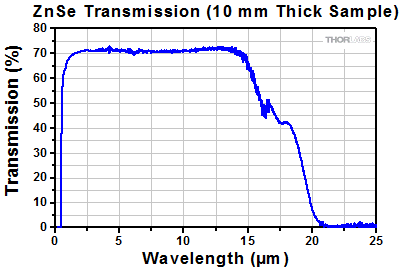
Click to Enlarge
Click Here for Raw Data
Figure 2.1 The transmission curve above was obtained using a 10 mm thick, uncoated sample of ZnSe; the incident light was normal to the surface. Please note that this is the measured transmission, including surface reflections.
ZnSe Reflectance Data
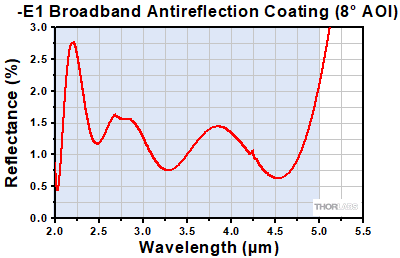
Click to Enlarge
Click Here for Raw Data
Figure 2.2 This plot shows the reflectance (per surface) of E1 AR-coated ZnSe aspheric lenses. The shaded region represents the range over which the coating is guaranteed to have an average reflectance of less than 1.25%.
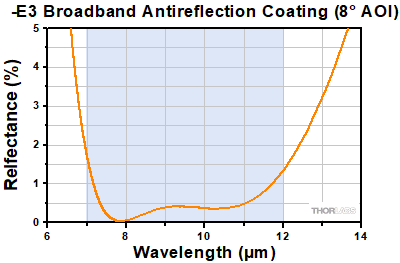
Click to Enlarge
Click Here for Raw Data
Figure 2.3 This plot shows the reflectance (per surface) of E3 AR-coated ZnSe aspheric lenses. The shaded region represents the range over which the coating is guaranteed to have an average reflectance of less than 1.0%.
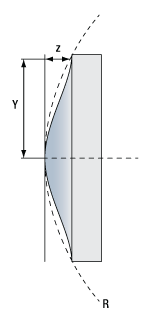
Click to Enlarge
Figure 3.1 Reference Drawing
Aspheric Lens Design Formula
| Definitions of Variables | |
|---|---|
| z | Sag (Surface Profile) as a Function of Y |
| Y | Radial Distance from Optical Axis |
| R | Radius of Curvature |
| k | Conic Constant |
| An | nth Order Aspheric Coefficient |
The aspheric surfaces of these lenses may be described using a polynomial expansion in Y, the radial distance from the optical axis. The surface profile or sagitta (often abbreviated as sag) is denoted by z, and is given by the following expression:
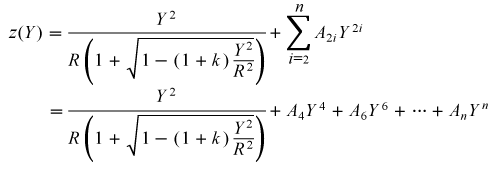
where R is the radius of curvature, k is the conic constant, and the An are the nth order aspheric coefficients. The sign of R is determined by whether the center of curvature for the lens surface is located to the right or left of the lens' vertex; a positive R indicates that the center of curvature is located to the right of the vertex, while a negative R indicates that the center of curvature is located to the left of the vertex. For example, the radius of curvature for the left surface of a biconvex lens would be specified as positive, while the radius of curvature for its right surface would be specified as negative.
Aspheric Lens Coefficients
Due to the rotational symmetry of the lens surface, only even powers of Y are contained in the polynomial expansion above. The target values of the aspheric coefficients for each product can be found in Table 3.2 or by clicking on the red documents icon (![]() ) next to each lens sold below.
) next to each lens sold below.
| Table 3.2 Aspheric Lens Coefficients | ||||
|---|---|---|---|---|
| Item #a | R (mm) | k | A4 | A6 |
| AL72512-E1 | 18.252 | -0.9809606 | -1.2305775E-05 | -9.0757117E-09 |
| AL72525-E1 | 35.83 | -1.000000 | -2.0494635E-06 | 0 |
| AL72550-E1 | 71.66 | -1.07282 | -2.5228605E-07 | 0 |
| AL72512-E3 | 17.804 | -1.000000 | -1.4335797E-05 | 0 |
| AL72525-E3 | 35.07 | -1.000000 | -2.0094416E-06 | 0 |
| AL72550-E3 | 70.133 | -1.439601 | -1.1330758E-07 | 0 |
Custom Aspheric Lenses
Key Capabilities
- Custom Lens Diameters, Focal Lengths, Substrates, Coatings, and Mounting Options
- Enhanced Specifications and Tighter Tolerances than Stock Optics
- Support for OEM Sales and Low-Quantity Special Orders
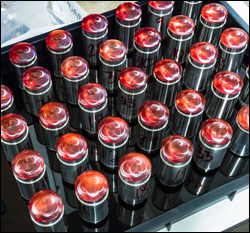
Click to Enlarge
Figure 152A A production lot of aspheric lenses that are ready for polishing at our headquarters in Newton, NJ.
Our in-house production capabilities allow us to offer a wide variety of custom CNC-polished and MRF-polished aspheric lenses. The diameter, focal length, conjugate ratio, substrate material, and coating of these optics can all be customized to meet the unique performance requirements of a given application. In addition, custom optics can be ordered with tighter tolerances and better specifications than our stock offerings. Because of our vertically integrated manufacturing process, these custom lenses are available for both OEM sales and individual low-quantity orders.
For the production of aspheric lenses, we have a CNC cell with Satisloh grinders and polishers, a QED Q-flex 100 for low wavefront error polishing, and a Satisloh C-25L for centration and custom shaping. The grinding and polishing machines allow us to manufacture both spherical and aspheric lenses with diameters from 10 mm (0.39") to 150 mm (5.91") or greater. The centration machine can achieve centration down to 5 arcseconds, which is much tighter than the tolerance on most of our stock optics, and can also be used to create optics with custom shapes.
We are generally able to produce custom aspheric lenses with short lead times. For modifications to an existing part, delivery in one week is standard. For custom shapes and long focal length optics, a 6-8 week lead time is typical.
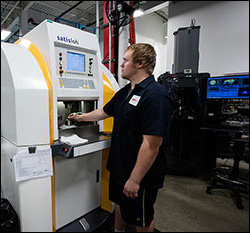
Click to Enlarge
Figure 152D An operator loading a Satisloh Centration Machine for stock aspheric optics and custom Lens Shapes.
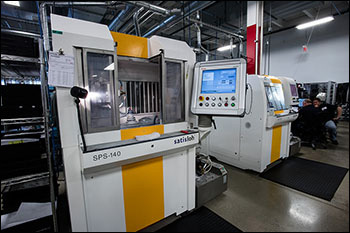
Click to Enlarge
Figure 152B Satisloh Grinder for Aspheric Lenses
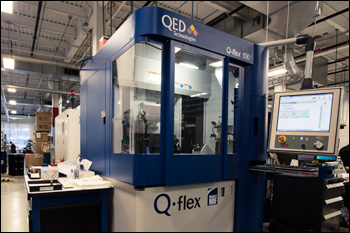
Click to Enlarge
Figure 152C QED Technologies Magnetorheological Finishing (MRF) Polisher
| Table 5.1 Damage Threshold Specifications | |
|---|---|
| Coating Designation (Item # Suffix) |
Damage Threshold |
| -E3 | 5 J/cm2 (10.6 µm, 100 ns, 1 Hz, Ø0.478 mm) |
Damage Threshold Data for Thorlabs' E3-Coated ZnSe Aspheres
The specifications in Table 5.1 are measured data for Thorlabs' E3-coated ZnSe aspheres. Damage threshold specifications are constant for all E3-coated ZnSe aspheres, regardless of the focal length.
Laser Induced Damage Threshold Tutorial
The following is a general overview of how laser induced damage thresholds are measured and how the values may be utilized in determining the appropriateness of an optic for a given application. When choosing optics, it is important to understand the Laser Induced Damage Threshold (LIDT) of the optics being used. The LIDT for an optic greatly depends on the type of laser you are using. Continuous wave (CW) lasers typically cause damage from thermal effects (absorption either in the coating or in the substrate). Pulsed lasers, on the other hand, often strip electrons from the lattice structure of an optic before causing thermal damage. Note that the guideline presented here assumes room temperature operation and optics in new condition (i.e., within scratch-dig spec, surface free of contamination, etc.). Because dust or other particles on the surface of an optic can cause damage at lower thresholds, we recommend keeping surfaces clean and free of debris. For more information on cleaning optics, please see our Optics Cleaning tutorial.
Testing Method
Thorlabs' LIDT testing is done in compliance with ISO/DIS 11254 and ISO 21254 specifications.
First, a low-power/energy beam is directed to the optic under test. The optic is exposed in 10 locations to this laser beam for 30 seconds (CW) or for a number of pulses (pulse repetition frequency specified). After exposure, the optic is examined by a microscope (~100X magnification) for any visible damage. The number of locations that are damaged at a particular power/energy level is recorded. Next, the power/energy is either increased or decreased and the optic is exposed at 10 new locations. This process is repeated until damage is observed. The damage threshold is then assigned to be the highest power/energy that the optic can withstand without causing damage. A histogram such as that shown in Figure 37B represents the testing of one BB1-E02 mirror.

Figure 37A This photograph shows a protected aluminum-coated mirror after LIDT testing. In this particular test, it handled 0.43 J/cm2 (1064 nm, 10 ns pulse, 10 Hz, Ø1.000 mm) before damage.

Figure 37B Example Exposure Histogram used to Determine the LIDT of
| Table 37C Example Test Data | |||
|---|---|---|---|
| Fluence | # of Tested Locations | Locations with Damage | Locations Without Damage |
| 1.50 J/cm2 | 10 | 0 | 10 |
| 1.75 J/cm2 | 10 | 0 | 10 |
| 2.00 J/cm2 | 10 | 0 | 10 |
| 2.25 J/cm2 | 10 | 1 | 9 |
| 3.00 J/cm2 | 10 | 1 | 9 |
| 5.00 J/cm2 | 10 | 9 | 1 |
According to the test, the damage threshold of the mirror was 2.00 J/cm2 (532 nm, 10 ns pulse, 10 Hz, Ø0.803 mm). Please keep in mind that these tests are performed on clean optics, as dirt and contamination can significantly lower the damage threshold of a component. While the test results are only representative of one coating run, Thorlabs specifies damage threshold values that account for coating variances.
Continuous Wave and Long-Pulse Lasers
When an optic is damaged by a continuous wave (CW) laser, it is usually due to the melting of the surface as a result of absorbing the laser's energy or damage to the optical coating (antireflection) [1]. Pulsed lasers with pulse lengths longer than 1 µs can be treated as CW lasers for LIDT discussions.
When pulse lengths are between 1 ns and 1 µs, laser-induced damage can occur either because of absorption or a dielectric breakdown (therefore, a user must check both CW and pulsed LIDT). Absorption is either due to an intrinsic property of the optic or due to surface irregularities; thus LIDT values are only valid for optics meeting or exceeding the surface quality specifications given by a manufacturer. While many optics can handle high power CW lasers, cemented (e.g., achromatic doublets) or highly absorptive (e.g., ND filters) optics tend to have lower CW damage thresholds. These lower thresholds are due to absorption or scattering in the cement or metal coating.

Figure 37D LIDT in linear power density vs. pulse length and spot size. For long pulses to CW, linear power density becomes a constant with spot size. This graph was obtained from [1].

Figure 37E Intensity Distribution of Uniform and Gaussian Beam Profiles
Pulsed lasers with high pulse repetition frequencies (PRF) may behave similarly to CW beams. Unfortunately, this is highly dependent on factors such as absorption and thermal diffusivity, so there is no reliable method for determining when a high PRF laser will damage an optic due to thermal effects. For beams with a high PRF both the average and peak powers must be compared to the equivalent CW power. Additionally, for highly transparent materials, there is little to no drop in the LIDT with increasing PRF.
In order to use the specified CW damage threshold of an optic, it is necessary to know the following:
- Wavelength of your laser
- Beam diameter of your beam (1/e2)
- Approximate intensity profile of your beam (e.g., Gaussian)
- Linear power density of your beam (total power divided by 1/e2 beam diameter)
Thorlabs expresses LIDT for CW lasers as a linear power density measured in W/cm. In this regime, the LIDT given as a linear power density can be applied to any beam diameter; one does not need to compute an adjusted LIDT to adjust for changes in spot size, as demonstrated in Figure 37D. Average linear power density can be calculated using this equation.

This calculation assumes a uniform beam intensity profile. You must now consider hotspots in the beam or other non-uniform intensity profiles and roughly calculate a maximum power density. For reference, a Gaussian beam typically has a maximum power density that is twice that of the uniform beam (see Figure 37E).
Now compare the maximum power density to that which is specified as the LIDT for the optic. If the optic was tested at a wavelength other than your operating wavelength, the damage threshold must be scaled appropriately. A good rule of thumb is that the damage threshold has a linear relationship with wavelength such that as you move to shorter wavelengths, the damage threshold decreases (i.e., a LIDT of 10 W/cm at 1310 nm scales to 5 W/cm at 655 nm):

While this rule of thumb provides a general trend, it is not a quantitative analysis of LIDT vs wavelength. In CW applications, for instance, damage scales more strongly with absorption in the coating and substrate, which does not necessarily scale well with wavelength. While the above procedure provides a good rule of thumb for LIDT values, please contact Tech Support if your wavelength is different from the specified LIDT wavelength. If your power density is less than the adjusted LIDT of the optic, then the optic should work for your application.
Please note that we have a buffer built in between the specified damage thresholds online and the tests which we have done, which accommodates variation between batches. Upon request, we can provide individual test information and a testing certificate. The damage analysis will be carried out on a similar optic (customer's optic will not be damaged). Testing may result in additional costs or lead times. Contact Tech Support for more information.
Pulsed Lasers
As previously stated, pulsed lasers typically induce a different type of damage to the optic than CW lasers. Pulsed lasers often do not heat the optic enough to damage it; instead, pulsed lasers produce strong electric fields capable of inducing dielectric breakdown in the material. Unfortunately, it can be very difficult to compare the LIDT specification of an optic to your laser. There are multiple regimes in which a pulsed laser can damage an optic and this is based on the laser's pulse length. The highlighted columns in Table 37F outline the relevant pulse lengths for our specified LIDT values.
Pulses shorter than 10-9 s cannot be compared to our specified LIDT values with much reliability. In this ultra-short-pulse regime various mechanics, such as multiphoton-avalanche ionization, take over as the predominate damage mechanism [2]. In contrast, pulses between 10-7 s and 10-4 s may cause damage to an optic either because of dielectric breakdown or thermal effects. This means that both CW and pulsed damage thresholds must be compared to the laser beam to determine whether the optic is suitable for your application.
| Table 37F Laser Induced Damage Regimes | ||||
|---|---|---|---|---|
| Pulse Duration | t < 10-9 s | 10-9 < t < 10-7 s | 10-7 < t < 10-4 s | t > 10-4 s |
| Damage Mechanism | Avalanche Ionization | Dielectric Breakdown | Dielectric Breakdown or Thermal | Thermal |
| Relevant Damage Specification | No Comparison (See Above) | Pulsed | Pulsed and CW | CW |
When comparing an LIDT specified for a pulsed laser to your laser, it is essential to know the following:

Figure 37G LIDT in energy density vs. pulse length and spot size. For short pulses, energy density becomes a constant with spot size. This graph was obtained from [1].
- Wavelength of your laser
- Energy density of your beam (total energy divided by 1/e2 area)
- Pulse length of your laser
- Pulse repetition frequency (prf) of your laser
- Beam diameter of your laser (1/e2 )
- Approximate intensity profile of your beam (e.g., Gaussian)
The energy density of your beam should be calculated in terms of J/cm2. Figure 37G shows why expressing the LIDT as an energy density provides the best metric for short pulse sources. In this regime, the LIDT given as an energy density can be applied to any beam diameter; one does not need to compute an adjusted LIDT to adjust for changes in spot size. This calculation assumes a uniform beam intensity profile. You must now adjust this energy density to account for hotspots or other nonuniform intensity profiles and roughly calculate a maximum energy density. For reference a Gaussian beam typically has a maximum energy density that is twice that of the 1/e2 beam.
Now compare the maximum energy density to that which is specified as the LIDT for the optic. If the optic was tested at a wavelength other than your operating wavelength, the damage threshold must be scaled appropriately [3]. A good rule of thumb is that the damage threshold has an inverse square root relationship with wavelength such that as you move to shorter wavelengths, the damage threshold decreases (i.e., a LIDT of 1 J/cm2 at 1064 nm scales to 0.7 J/cm2 at 532 nm):

You now have a wavelength-adjusted energy density, which you will use in the following step.
Beam diameter is also important to know when comparing damage thresholds. While the LIDT, when expressed in units of J/cm², scales independently of spot size; large beam sizes are more likely to illuminate a larger number of defects which can lead to greater variances in the LIDT [4]. For data presented here, a <1 mm beam size was used to measure the LIDT. For beams sizes greater than 5 mm, the LIDT (J/cm2) will not scale independently of beam diameter due to the larger size beam exposing more defects.
The pulse length must now be compensated for. The longer the pulse duration, the more energy the optic can handle. For pulse widths between 1 - 100 ns, an approximation is as follows:

Use this formula to calculate the Adjusted LIDT for an optic based on your pulse length. If your maximum energy density is less than this adjusted LIDT maximum energy density, then the optic should be suitable for your application. Keep in mind that this calculation is only used for pulses between 10-9 s and 10-7 s. For pulses between 10-7 s and 10-4 s, the CW LIDT must also be checked before deeming the optic appropriate for your application.
Please note that we have a buffer built in between the specified damage thresholds online and the tests which we have done, which accommodates variation between batches. Upon request, we can provide individual test information and a testing certificate. Contact Tech Support for more information.
[1] R. M. Wood, Optics and Laser Tech. 29, 517 (1998).
[2] Roger M. Wood, Laser-Induced Damage of Optical Materials (Institute of Physics Publishing, Philadelphia, PA, 2003).
[3] C. W. Carr et al., Phys. Rev. Lett. 91, 127402 (2003).
[4] N. Bloembergen, Appl. Opt. 12, 661 (1973).
In order to illustrate the process of determining whether a given laser system will damage an optic, a number of example calculations of laser induced damage threshold are given below. For assistance with performing similar calculations, we provide a spreadsheet calculator that can be downloaded by clicking the LIDT Calculator button. To use the calculator, enter the specified LIDT value of the optic under consideration and the relevant parameters of your laser system in the green boxes. The spreadsheet will then calculate a linear power density for CW and pulsed systems, as well as an energy density value for pulsed systems. These values are used to calculate adjusted, scaled LIDT values for the optics based on accepted scaling laws. This calculator assumes a Gaussian beam profile, so a correction factor must be introduced for other beam shapes (uniform, etc.). The LIDT scaling laws are determined from empirical relationships; their accuracy is not guaranteed. Remember that absorption by optics or coatings can significantly reduce LIDT in some spectral regions. These LIDT values are not valid for ultrashort pulses less than one nanosecond in duration.

Figure 71A A Gaussian beam profile has about twice the maximum intensity of a uniform beam profile.
CW Laser Example
Suppose that a CW laser system at 1319 nm produces a 0.5 W Gaussian beam that has a 1/e2 diameter of 10 mm. A naive calculation of the average linear power density of this beam would yield a value of 0.5 W/cm, given by the total power divided by the beam diameter:

However, the maximum power density of a Gaussian beam is about twice the maximum power density of a uniform beam, as shown in Figure 71A. Therefore, a more accurate determination of the maximum linear power density of the system is 1 W/cm.
An AC127-030-C achromatic doublet lens has a specified CW LIDT of 350 W/cm, as tested at 1550 nm. CW damage threshold values typically scale directly with the wavelength of the laser source, so this yields an adjusted LIDT value:

The adjusted LIDT value of 350 W/cm x (1319 nm / 1550 nm) = 298 W/cm is significantly higher than the calculated maximum linear power density of the laser system, so it would be safe to use this doublet lens for this application.
Pulsed Nanosecond Laser Example: Scaling for Different Pulse Durations
Suppose that a pulsed Nd:YAG laser system is frequency tripled to produce a 10 Hz output, consisting of 2 ns output pulses at 355 nm, each with 1 J of energy, in a Gaussian beam with a 1.9 cm beam diameter (1/e2). The average energy density of each pulse is found by dividing the pulse energy by the beam area:

As described above, the maximum energy density of a Gaussian beam is about twice the average energy density. So, the maximum energy density of this beam is ~0.7 J/cm2.
The energy density of the beam can be compared to the LIDT values of 1 J/cm2 and 3.5 J/cm2 for a BB1-E01 broadband dielectric mirror and an NB1-K08 Nd:YAG laser line mirror, respectively. Both of these LIDT values, while measured at 355 nm, were determined with a 10 ns pulsed laser at 10 Hz. Therefore, an adjustment must be applied for the shorter pulse duration of the system under consideration. As described on the previous tab, LIDT values in the nanosecond pulse regime scale with the square root of the laser pulse duration:

This adjustment factor results in LIDT values of 0.45 J/cm2 for the BB1-E01 broadband mirror and 1.6 J/cm2 for the Nd:YAG laser line mirror, which are to be compared with the 0.7 J/cm2 maximum energy density of the beam. While the broadband mirror would likely be damaged by the laser, the more specialized laser line mirror is appropriate for use with this system.
Pulsed Nanosecond Laser Example: Scaling for Different Wavelengths
Suppose that a pulsed laser system emits 10 ns pulses at 2.5 Hz, each with 100 mJ of energy at 1064 nm in a 16 mm diameter beam (1/e2) that must be attenuated with a neutral density filter. For a Gaussian output, these specifications result in a maximum energy density of 0.1 J/cm2. The damage threshold of an NDUV10A Ø25 mm, OD 1.0, reflective neutral density filter is 0.05 J/cm2 for 10 ns pulses at 355 nm, while the damage threshold of the similar NE10A absorptive filter is 10 J/cm2 for 10 ns pulses at 532 nm. As described on the previous tab, the LIDT value of an optic scales with the square root of the wavelength in the nanosecond pulse regime:

This scaling gives adjusted LIDT values of 0.08 J/cm2 for the reflective filter and 14 J/cm2 for the absorptive filter. In this case, the absorptive filter is the best choice in order to avoid optical damage.
Pulsed Microsecond Laser Example
Consider a laser system that produces 1 µs pulses, each containing 150 µJ of energy at a repetition rate of 50 kHz, resulting in a relatively high duty cycle of 5%. This system falls somewhere between the regimes of CW and pulsed laser induced damage, and could potentially damage an optic by mechanisms associated with either regime. As a result, both CW and pulsed LIDT values must be compared to the properties of the laser system to ensure safe operation.
If this relatively long-pulse laser emits a Gaussian 12.7 mm diameter beam (1/e2) at 980 nm, then the resulting output has a linear power density of 5.9 W/cm and an energy density of 1.2 x 10-4 J/cm2 per pulse. This can be compared to the LIDT values for a WPQ10E-980 polymer zero-order quarter-wave plate, which are 5 W/cm for CW radiation at 810 nm and 5 J/cm2 for a 10 ns pulse at 810 nm. As before, the CW LIDT of the optic scales linearly with the laser wavelength, resulting in an adjusted CW value of 6 W/cm at 980 nm. On the other hand, the pulsed LIDT scales with the square root of the laser wavelength and the square root of the pulse duration, resulting in an adjusted value of 55 J/cm2 for a 1 µs pulse at 980 nm. The pulsed LIDT of the optic is significantly greater than the energy density of the laser pulse, so individual pulses will not damage the wave plate. However, the large average linear power density of the laser system may cause thermal damage to the optic, much like a high-power CW beam.
| Posted Comments: | |
Angel Fernandez Alvarez
(posted 2025-04-10 09:40:29.877) Hello,
I would like to know if you have data below 2 µm for the "-E1 Antireflection Coating". If so, could you please provide it?
Looking forward to hearing back from you,
Angel. EGies
(posted 2025-04-11 03:20:39.0) Thank you for contacting Thorlabs. The raw data on our Optical Coatings page (https://www.thorlabs.com/newgrouppage9.cfm?objectgroup_id=5840&tabname=arcoating) for our -E/-E1 antireflection coating has reflectance data going down to 1.0um. This data can be found by scrolling down to the -E1 coating in the “Broadband Antireflective Coating Specifications” table, then clicking on the “Raw Data” link in the Performance Plot column. I have reached out to you directly regarding this. Eric Ma
(posted 2023-05-10 09:59:08.42) Hi, possible to get a custom piece like AL72512-E3, but designed for 8 um, with E4 (broadband MIR) coating? Also, possible to get the focal shift and focal spot size drift vs. wavelength for AL72512-E3? Thanks! ksosnowski
(posted 2023-06-02 03:36:20.0) Thanks for reaching out to Thorlabs. We are able to offer different coatings on these lenses. I have reached out directly to discuss this application in more detail. user
(posted 2022-05-06 17:18:30.937) Hello,
I would need the AL72512 lens, but with an E2 AR coating,
would it be possible?
sincerely
Mathieu Manceau cdolbashian
(posted 2022-05-10 04:11:11.0) Thank you for reaching out to us Mathieu. It is indeed possible to offer this as a custom. I have reached out to you to discuss specifics of quantity and lens choice. For future custom inquiries, feel free to email techsales@thorlabs.com. t-ochiai
(posted 2019-02-08 01:48:58.767) AL72550-EのCWでの損傷閾値を教えてください。
類似製品(Gコート)の損傷閾値でも構いません。CWでの損傷閾値が知りたいです。 YLohia
(posted 2019-04-05 11:32:40.0) Hello, thank you for contacting Thorlabs. Our Technical Support team in Japan has reached out to you and we have been in touch with you directly regarding your request. ori.henderson-sapir
(posted 2014-06-18 07:40:42.14) Can you please add to the documents tab the diffraction nearly/limited performance in pdf for those who do not have access to ZEMAX to process the files.
Thank you myanakas
(posted 2014-07-08 02:22:35.0) Response from Mike at Thorlabs: Based on this feedback we have added spot size distribution plots to the ZnSe Aspheres web page. This information can be found in the performance column in the tables above the part numbers below. I have also contacted you directly with these graphs. anish.bekal
(posted 2014-01-31 04:38:03.41) I have already raised a purchase order for this component.
What is the transmission loss at 0.6u, 2.35u and 6um for a 3-5um coated system. CAn you provide us an uncoated ZnSe. pbui
(posted 2014-03-04 09:31:28.0) The single surface reflectance values for AL72512-E at your requested wavelengths are listed below. 600nm = 13.5% 2350nm = 13.25% 6000nm = 8.7% We should be able to provide an uncoated version of this lens. We'll contact you to discuss this further. |

| Item # | Diameter | Focal Length |
f/#a | Clear Aperture |
Numerical Aperture |
Working Distanceb |
Center Thickness |
Refractive Indexc |
Performance |
|---|---|---|---|---|---|---|---|---|---|
| AL72512-E1 | 25.4 mm | 12.7 mm | 0.5 | >22.86 mm | 0.67 | 9.9 mm | 7.0 mm | 2.433 | Spot Size Cross Section |
| AL72525-E1 | 25.4 mm | 25.0 mm | 0.98 | >22.86 mm | 0.42 | 22.5 mm | 6.0 mm | 2.433 | Spot Size Cross Section |
| AL72550-E1 | 25.4 mm | 50.0 mm | 1.97 | >22.86 mm | 0.22 | 47.9 mm | 5.0 mm | 2.433 | Spot Size Cross Section |

| Item # | Diameter | Focal Length |
f/#a | Clear Aperture |
Numerical Aperture |
Working Distanceb |
Center Thickness |
Refractive Indexc |
Performance |
|---|---|---|---|---|---|---|---|---|---|
| AL72512-E3 | 25.4 mm | 12.7 mm | 0.5 | >22.86 mm | 0.67 | 10.1 mm | 6.2 mm | 2.403 | Spot Size Cross Section |
| AL72525-E3 | 25.4 mm | 25.0 mm | 0.98 | >22.86 mm | 0.42 | 22.5 mm | 6.0 mm | 2.403 | Spot Size Cross Section |
| AL72550-E3 | 25.4 mm | 50.0 mm | 1.97 | >22.86 mm | 0.22 | 47.9 mm | 5.0 mm | 2.403 | Spot Size Cross Section |
 Products Home
Products Home















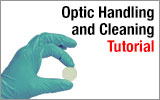
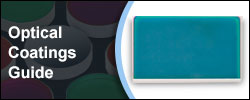
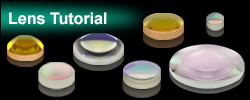


 ZnSe Aspheres
ZnSe Aspheres